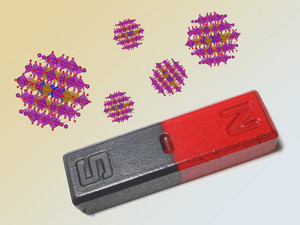A joint Indian/Austrian research team has uncovered the secrets behind why manganese oxides (manganites) have demonstrably different properties when size is reduced. From the Nov. 29, 2011 news item on Nanowerk,
Material properties such as electrical conductivity, magnetic properties or the melting point do not depend on an object’s size and shape. “In India, however, an experiment recently showed that special manganese oxides – so called manganites – exhibit completely different properties, when their size is reduced to tiny grains”, Karsten Held explains.
A team of scientists from the Vienna University of Technology (Austria) and the University of Calcutta (India) investigated this phenomenon – and the new effect could be explained in computer simulations. In a crossover from large crystals to smaller crystals, the distribution of the electrons changes, and so does their energy. This, in turn, changes the electrical and magnetic properties of the crystal. “The phenomenon of quantum entanglement plays a very important role here”, says Professor Karsten Held. “We cannot think of the electrons as classical particles, moving independently of each other, on well-separated paths. The electrons can only be described collectively.” By changing their size, the properties of the manganite-crystals can now be harnessed. Larger crystals are insulators, and they are not magnetic. Tiny crystal pieces on the other hand turn out to be metallic ferromagnets.
Here’s an image of a magnet and crystals,

A magnet and an illustration of manganite cystals (downloaded from the Vienna University of Technology wesite)
Here’s a link to the Nov. 29, 2011 news release from the Vienna University of Technology where you can find additional information in English and German and some pictures.